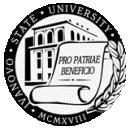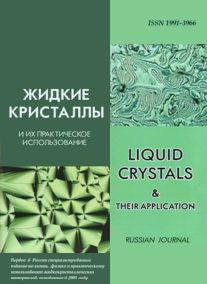|

|
Liquid Crystals and their Application
Russian Journal Zhidkie kristally i ikh prakticheskoe ispol'zovanie Жидкие кристаллы и их практическое использование |

|
|

|

|
|
|
Menu

|
|
|
|
|
Zhidk. krist. ikh prakt. ispol'z. = Liq. Cryst. and their Appl., 2017, 17 (1), 5—19.
DOI: 10.18083/LCAppl.2017.1.5 |

|
|
Physico-Chemical Investigation of Composites Based on Nematic Liquid Crystals
|
G. M. Bayramov
|
Author affiliations
Baku State University,
23 Z. Khalilov Street, Baku, AZ-1148, Azerbaijan.
E-mail: gazanfarb@mail.ru
|
|
Abstract
The review presents an analysis of experimental studies on development of composites based on nematic liquid crystals (NLC) and small solid particles (SSP). Varying a type and concentration of both liquid crystal (LC) and SSP and the mode of mixing and cooling systems makes the development of new composites forming a three-dimensional network in the nematic phase possible. In modern studies different methods to fabricate the NLC based composites with both positive and negative anisotropy of the LC dielectric constant are used. Different polymeric materials are utilized as SSP. To prevent aggregation of the composite particles, an appropriate stabilizing agent is added. Several studies have shown that in certain positions in the LC phase of the composite systems using polymers (as SSP) one can achieve the formation of the spatial network by slowly cooling the mixture below the melting point of the polymer and the isotropic-nematic phase transition of the LC. Kinetics of the spatial grid is investigated by using polarization microscopy and small-angle laser light scattering. We also reviewed papers, which describe the results of measurements of the threshold voltage for homeotropic-planar transition and electro-hydrodynamic instability, switch times of the both effects, as well as voltage-contrast performances for these composites.
Keywords: nematic liquid crystals, dielectric anisotropy, composite, small solid particles, spatial grid
|
|
|
|
|
|




